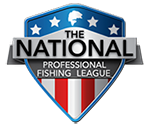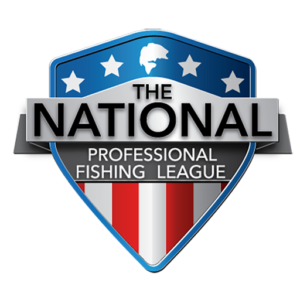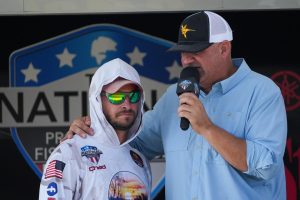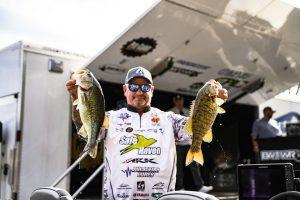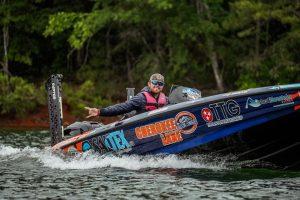
Story by Ken Duke | Photos by Tanner & Travis Lyons
We had a postponement at Stop 4 of the 2025 NPFL season. There was rain and lightning and high winds at Oklahoma’s Lake Eufaula, so tournament officials decided to delay Day 1 until Thursday, June 19. It was the right call. The forecast looks good, and this three-day competition will now be a two-day event.
This sort of thing happens all the time, and it will continue to happen until tournament officials can control the weather.
As fans and followers of the sport, our fun is delayed but not denied.
As for the competitors, they’re left to wonder if the fish they found in practice will still be there when the tournament finally starts. The ones who didn’t find fish hope the fish will somehow find them instead.
But there are bigger adjustments that no one ever seems to talk about. Here are a few.
1. It’s easier to win on a spot.
A three- or four-day derby is generally won by fishing a “pattern”—a repeatable group of parameters that an angler might find all over a lake or river. An example of a pattern might be to slow roll a chartreuse and white spinnerbait through flooded willow bushes on main lake points where there’s water with less than 2 feet of visibility. Because there might be 30 such main lake points with 30 such willow bushes, an angler could run around the lake fishing them all and having confidence that he will take a fish or two off most of them. Hundreds of fish may be using this pattern, and many of them may be big enough to earn a ride to the tournament scales.
The longer the tournament and the larger the body of water, the more likely you will need a pattern to win.
But cut that tournament to just a day or two, and it becomes much more likely that the winner will be fishing a “spot”—a productive area that holds just a few large fish. If the angler can win the boat race to that spot or otherwise have it to himself, he’s in a great position to win.
2. Fish management is less important.
The shorter the tournament, the fewer bass you need to win. Instead of working an area or pattern with “kid gloves,” knowing you need 15 bass over three days, an angler can exploit it for all it may offer. Burn, baby burn! He doesn’t need 60 pounds to win; 42 will do.
It’s time to put the trolling motor down and get to chunking and winding. Every day becomes the final day as you go for every ounce you can get.
3. Adjust your target weight.
If you think it’ll take 45 pounds to win a three-day tournament, you shouldn’t assume it will take 30 pounds to win a two-day event. Bet that it will take more than that because anglers will be exploiting their opportunities rather than conserving the fish they’ve found. Instead of 15 pounds a day, you’d better plan for 17 or 18 to be in the hunt.
4. There’s less room for error.
In a three- or four-day tournament, you might be able to weather a mental error, a mechanical issue, a lost fish, or a wrong move. If the tournament is just one or two days, those issues will almost always take you out of the hunt for the trophy.
But that doesn’t mean an angler should play it safe. Quite the opposite, in fact. In a shortened tournament, fortune favors the bold. Big, risky moves—that pay off!—are usually what wins. Playing it safe gets you just in or just out of the money.
The savvy angler assesses his needs for the shortened event. Does he need a win and big payday to stay in the game or is he stockpiling points to qualify for a championship? Answer that question and it answers most of the questions for that tournament’s strategy.
5. You can’t spin to win.
In a long tournament—three or four days—there may be time to change things up, scrap a plan that’s not working and cobble something together that might. In just a day or two, the most effective path is almost invariably to push ahead, keep casting, maximize presentations and minimize time spent running or otherwise not fishing. Every lost cast is a lost opportunity.
Losing a competition day may make a tournament shorter, but it doesn’t make it less interesting, less compelling or less strategic.
